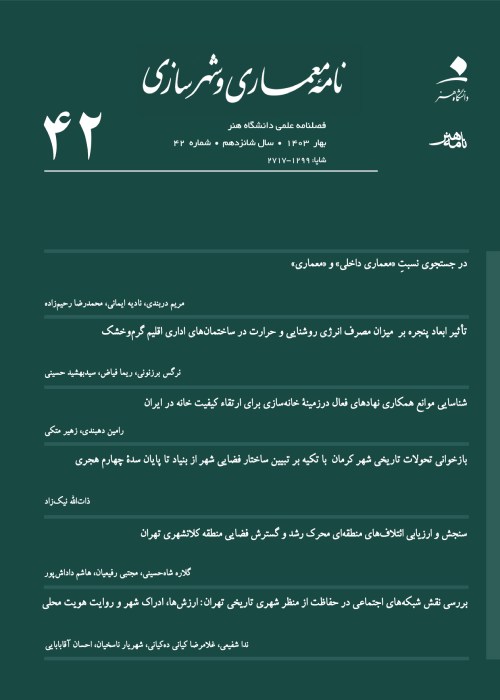The effect of Various Surface Materials on Rising Ambient Air Temperature in Hot-Arid Climate
Urban geometry and the materials used in urban fabric play an important role in the microclimate of cities and the mitigation of heat islands. Materials can absorb solar and infrared radiation and scatter the accumulated heat into the atmosphere. The use of large quantities of construction materials such as bricks, concrete, asphalt mixtures, stones, etc. in urban areas, instead of using natural terrain and green areas, is one of the main causes of the Urban Heat Island (UHI). Urban surface materials, as a major interface element, have a significant role in improving microclimate and comfort conditions and reduction of heat gains. An experimental study was carried out to evaluate the effect of various urban surface materials on the potentiality of increasing ambient air temperature in Tehran. 30 conventional paving and roofing materials, which are being used in Iran, were examined during the summer of 2014. The thermophysical properties and solar reflectance values of these materials were measured, in order to determine the impact of the thermal and optical performance of the samples under study on ambient and surface temperatures and their effect on UHI in the hot-arid climate of Tehran. A statistical analysis using F-ANOVA and t-test was performed to identify the effect of physical properties including surface color, surface roughness, and construction of these materials. A spectrometer and an infrared camera were used to quantify the surface reflection and emissivity of the materials. Samples were placed on an extruded polystyrene (XPS) layer -except grass and asphalt that existed in the site- to eliminate the heat transfer between the ground and the samples. The surface temperature of the materials was hourly measured using T type contact thermocouples for 24 days. Also, temperature fluctuations were studied in relation to outdoor temperature. The highest thermal changes in the materials mostly occur in the mid-day, when outdoor temperature and solar radiation are at their maximum. Most of the analysis was carried out between 11:00 am. and 05:00 pm. The results show that dark-colored surface materials have more tendency to absorb solar radiation compared to the smooth and light-colored ones and were warmer. Some materials were warmer than ambient air temperature which is related to the physical, optical, and thermal properties of the samples. Comparative analysis of current pavement and roofing materials used in Tehran showed that most surface temperatures of materials surface are more than 54 ˚C and the Solar Reflectance Index (SRI) and albedo are lower than 50% that will lead to higher surface temperatures. According to the measurement results and the increase of UHI in Tehran metropolitan area due to the density of the city, the use of light color and smooth materials with high solar reflectance, regardless of their shape, and more greenery covers are more appropriate for Tehran. It is also an effective strategy in mitigating urban heat islands, decreasing cooling load during summer, and improvement of thermal comfort in urban spaces, provided that nuisance glare is prohibited.
- حق عضویت دریافتی صرف حمایت از نشریات عضو و نگهداری، تکمیل و توسعه مگیران میشود.
- پرداخت حق اشتراک و دانلود مقالات اجازه بازنشر آن در سایر رسانههای چاپی و دیجیتال را به کاربر نمیدهد.



